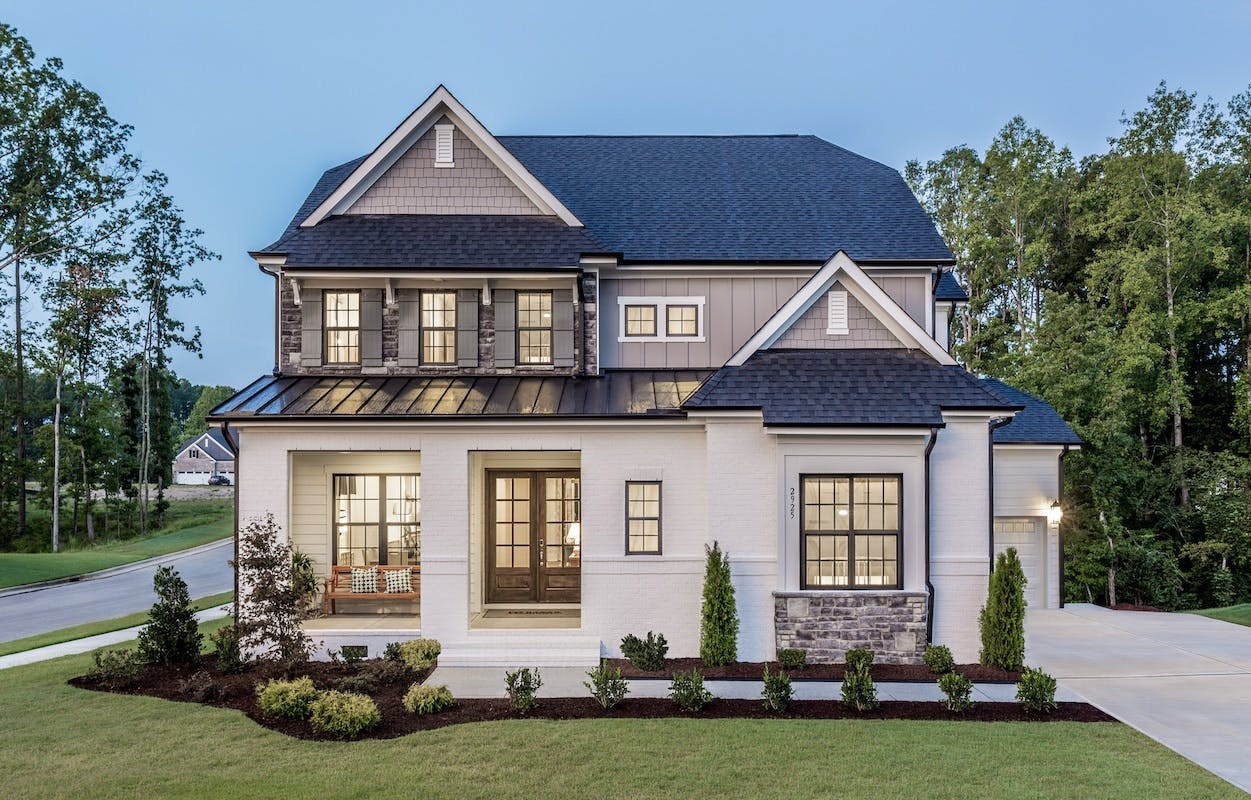
Commercial residential or commercial property, likewise called business property, investment residential or commercial property or earnings residential or commercial property, is property (buildings or land) planned to generate a revenue, either from capital gains or rental earnings. [1] Commercial residential or commercial property consists of office complex, medical centers, hotels, shopping malls, retailers, multifamily housing structures, farm land, storage facilities, and garages. In many U.S. states, house consisting of more than a certain number of systems certifies as industrial residential or commercial property for loaning and tax purposes.

Commercial buildings are buildings that are utilized for commercial purposes, and include office complex, storage facilities, and retail structures (e.g. convenience shops, 'big box' stores, and shopping center). In metropolitan places, a commercial structure might combine functions, such as offices on levels 2-10, with retail on flooring 1. When area designated to multiple functions is substantial, these buildings can be called multi-use. Local authorities frequently preserve stringent regulations on business zoning, and have the authority to designate any zoned area as such; a service needs to be found in a commercial area or area zoned a minimum of partially for commerce.

Types of commercial residential or commercial property
Commercial realty is typically divided into 6 classifications:
Office complex - This classification consists of single-tenant residential or commercial properties, little professional workplace structures, downtown high-rise buildings, and whatever in between.
Retail Shops/Restaurants - This category includes pad sites on highway frontages, single renter retail buildings, inline multi-tenant retail, little area shopping mall, larger recreation center with grocery shop anchor occupants, way of life centers that blend both indoor and outside shopping, "power centers" with big anchor stores such as Best Buy, PetSmart, OfficeMax, and Mall that normally house many indoor shops. [2] Multifamily property - This category consists of apartment or condo complexes or high-rise home buildings. Generally, anything larger than a
fourplex is considered business property. [3] 1. Land - This classification includes financial investment residential or commercial properties on undeveloped, raw, rural land in the path of future development. Or, infill land with an urban location, pad sites, and more.
2. Industrial - This category includes storage facilities, large R&D centers, freezer or cold chain residential or commercial properties, and warehouse.
3. Miscellaneous - This catch all classification would include any other nonresidential residential or commercial properties such as hotel, hospitality, medical, and self-storage advancements, as well as much more.
Of these, just the very first five are categorized as being commercial structures. Residential earnings residential or commercial property might likewise symbolize multifamily homes.
Investment
The standard elements of a financial investment are cash inflows, outflows, timing of capital, and risk. The capability to examine these elements is type in offering services to investors in industrial genuine estate.
Cash inflows and outflows are the cash that is put into, or
received from, the residential or commercial property including the original purchase expense and sale profits over the whole life of the financial investment. An example of this sort of investment is a realty fund.
Cash
inflows include the following:
- Rent
- Operating cost recoveries
- Fees: Parking, vending, services, etc- Proceeds from sale
- Tax Benefits
- Depreciation
- Tax credits (e.g., historical).
Cash outflows include:
- Initial financial investment (down payment).
- All operating expenditures and taxes.
- Debt service (mortgage payment).
- Capital spending and occupant leasing costs Costs upon sale.
The timing of money inflows and outflows is essential to understand in order to job periods of positive and negative cash flows. Risk depends on market conditions, existing renters, and the likelihood that they will restore their leases year-over-year. It is very important to be able to forecast the probability that the cash inflows and
outflows will be in the amounts anticipated, what is the likelihood that the timing of them will be as predicted, and what the probability is that there might be unexpected cash circulations, and in what amounts they may happen.
The overall value of industrial residential or commercial property in the United States was approximately $6 trillion in 2018. [4] The relative strength of the market is determined by the US Commercial Real Estate Index which is made up of 8 financial motorists and is calculated weekly.
According to Real Capital Analytics, a New
York realty research company and subsidiary of MSCI, more than $160 billion of business residential or commercial properties in the United States are now in default, foreclosure, or bankruptcy. In 2024, workplace leasing volume increased to its highest level given that 2020, but roughly 60% of active office leases entered into effect prior to the pandemic. [5] In Europe, roughly half of the EUR960 billion of debt backed by European industrial genuine estate is expected to require refinancing in the next 3 years, according to PropertyMall, a UK-based
business residential or commercial property news company. Additionally, the economic conditions surrounding future rate of interest walkings; which might put renewed pressure on assessments, complicate loan refinancing, and hamper financial obligation maintenance might trigger major dislocation in commercial real estate markets.
However, the contribution to Europe's economy in 2012 can be approximated at EUR285 billion according to EPRA and INREV, not to point out social benefits of an effective real estate sector. [6] It is approximated that industrial residential or commercial property is responsible for securing around 4 million tasks throughout Europe.
As of April 2025, commercial real estate confidence experienced its sharpest drop considering that the COVID-19 pandemic in the middle of the Trump Administration's latest tariff policies, with positive sentiment falling from 126.5% in the latter half of 2024 to 87.9%, according to the 1Q 2025 Board of Governors Sentiment Index. [7]
Commercial residential or commercial property transaction process (offer management)
Typically, a broker will market a residential or commercial property on behalf of the seller. Brokers representing buyers or buyers' representatives determine residential or commercial property conference a set of
criteria set out by the buyer. Kinds of buyers might include an owner-user, personal investor, acquisitions, capital investment, or personal equity companies. The purchaser or its agents will carry out a preliminary evaluation of the physical residential or commercial property, place and possible success (if for financial investment) or
adequacy of residential or commercial property for its desired use (if for owner-user).
If it is determined the potential financial investment satisfies the purchaser's criteria, they may indicate their intent to progress with a letter of intent (LOI). Letters of Intent are utilized to describe the major terms of a deal in order to prevent unneeded expenses of preparing legal files in case the celebrations do not consent to the terms as
prepared. Once a Letter of Intent is signed by both parties, a purchase and sale agreement (PSA) is drafted. Not all commercial residential or commercial property transactions utilize a Letter of Intent although it is common. A PSA is a legal agreement in between the seller and a single interested purchaser which establishes the terms, conditions and timeline of the sale in between the purchaser and seller. A PSA may be an extremely worked out file with tailored terms or may be a standardized contract similar to those utilized in property deals. [8]
Once a PSA is executed, the buyer is typically needed to send an escrow deposit, which might be refundable under specific conditions, to a title company workplace or held by a brokerage in escrow. The deal moves to the due diligence stage, where the purchaser makes a more in-depth assessment of the residential or commercial property. Purchase and sale agreements will normally include provisions which need the seller to reveal specific details for purchaser's review to determine if the regards to the contract are still appropriate. The buyer might can terminate the transaction and/or renegotiate the terms, often described as "contingencies". Many purchase agreements are contingent on the purchaser's capability to obtain mortgage financing and buyer's satisfactory evaluation of specific due diligence products. Common due diligence products include residential or commercial property financial statements, rent rolls, vendor contracts, zoning and legal uses, physical and ecological condition, traffic patterns and other relevant info to the buyer's purchase decision specified in the PSA. In competitive real estate markets, purchasers might waive contingencies in order to make a deal more attractive to a buyer. The PSA will normally need the seller to offer due diligence details to the seller in a timely way and limit the purchaser's time to terminate the offer based upon its due diligence evaluation findings. If the purchaser terminates the transaction within the due diligence timeframe, the escrow deposit is
frequently gone back to the buyer. If the buyer has actually not terminated the agreement pursuant to the PSA contingencies, the escrow deposit ends up being non-refundable and failure to complete the purchase will lead to the escrow deposit funds to be moved to the seller as a cost for failure to close. The parties will continue to close the transaction in which funds and title are exchanged.
When an offer closes, post-closing procedures might begin, including notifying occupants of an ownership change, transferring supplier relationships, and turning over pertinent details to the asset management group. [citation needed]
See also
Economics portal.
Corporate realty.
Class An office space.
Commercial Information Exchange.
Commercialrealestate.com.au.
Estoppel certificate, a file utilized in.
International genuine estate.
OOCRE (Owner Occupied
Commercial Real Estate).
Real estate.
Property investing.
Real estate economics.
Further reading

Maliene, V.; Deveikis, S.; Kirsten, L.; Malys, N. (2010 ). "Commercial Leisure Residential Or Commercial Property Valuation: A Contrast of the Case Studies in UK and Lithuania". International Journal of Strategic Residential Or Commercial Property
Management. 14 (1 ): 35-48. doi:10.3846/ ijspm.2010.04.
References
^ Investopedia Definition
^ An, Xudong; Pivo, Gary (2018-01-03). "Green Buildings in Commercial Mortgage-Backed Securities: The Effects of LEED and Energy Star Certification on Default Risk and Loan Terms". Real Estate Economics. 48 (1 ): 7-42. doi:10.1111/ 1540-6229.12228. ISSN 1080-8620. S2CID 158506082.
^ Plazzi, Alberto (26 August 2010). "Expected Returns and Expected Growth in Rents of Commercial Property". The Review of Financial Studies. 23 (9 ): 3469-3519. doi:10.1093/ rfs/hhq069.
^ AMADEO, KIMBERLY (July 31, 2018). "Commercial Property and the Economy".
Dotdash.
^ "US Office Market Dynamics - Q2 2024". 23 July 2024.
^ Gareth, Lewis (2012 ). "Realty in the real economy" (PDF). EPRA. Archived from the original (PDF) on 2013-05-17.
^ "Tariffs Trigger Sharpest Drop in CRE Confidence Since Pandemic". benefitspro.com. Retrieved 2025-04-27.
^ Gosfield, Gregory G. (2000 ). "A Guide on Real Estate Options". Real Residential Or Commercial Property, Probate and Trust Journal.
